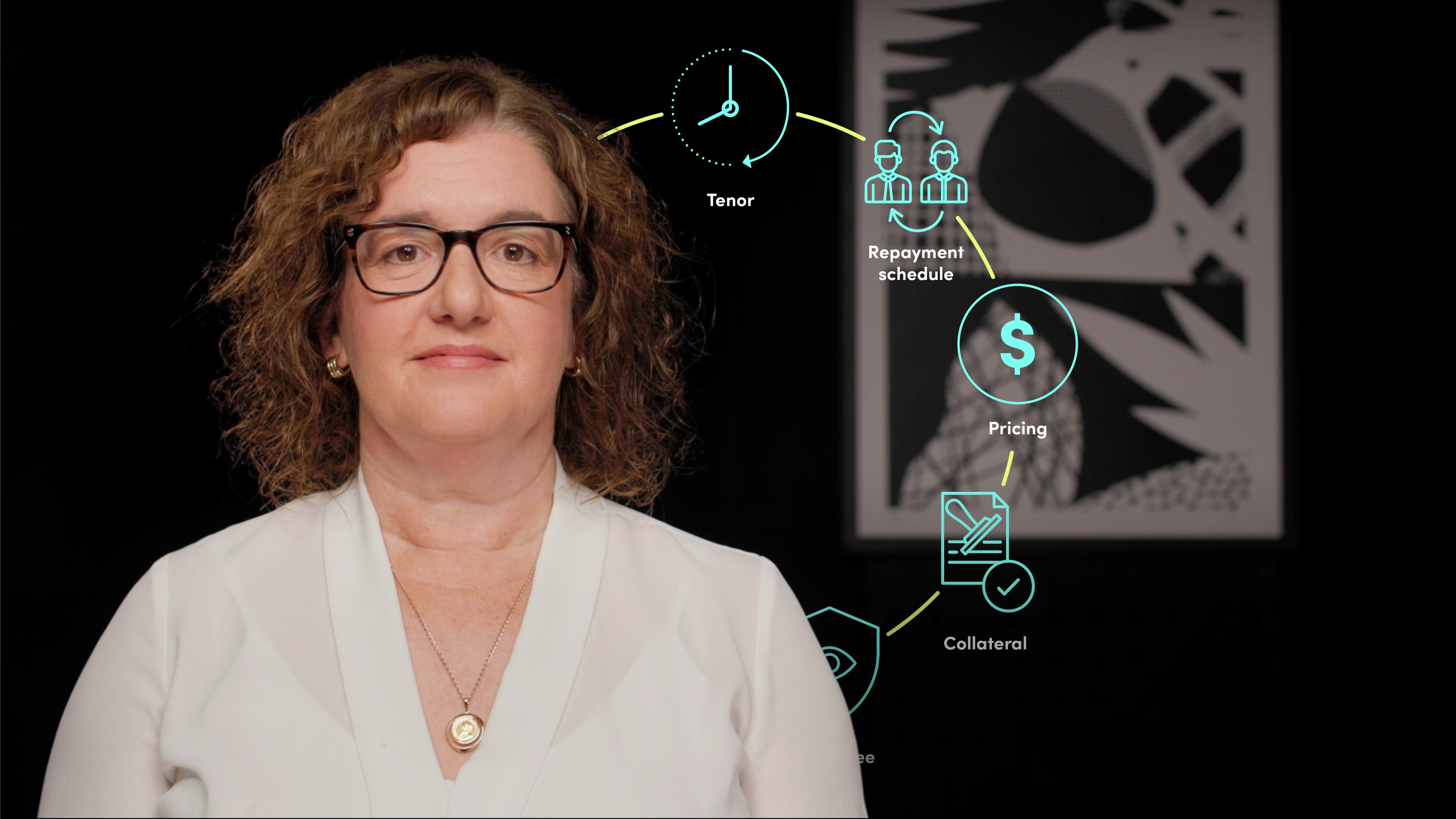
Loan Transaction Structuring

Belinda Green
30 years: Credit risk specialist
In this video, Belinda expands on the topic of loan structuring and documentation to examine the structuring process and the steps required to design effective covenants.
In this video, Belinda expands on the topic of loan structuring and documentation to examine the structuring process and the steps required to design effective covenants.

Loan Transaction Structuring
11 mins 57 secs
Key learning objectives:
Define deal structuring
Understand the deal structuring process
Outline the steps required to design effective covenants
Overview:
Deal structuring is important in minimising potential losses in the event of default by the borrower or counterparty. It involves creating a unique mix of components such as tenor, repayment schedule, pricing, collateral, guarantees, representations and warranties, conditions precedent, covenants, and information undertakings. The deal structuring process can be divided into three stages: the design stage, the negotiation stage, and the drawdown and monitoring stage.
What is deal structuring?
Deal structuring is a process for managing credit risk that involves more than just agreeing on the commercial terms of a debt facility. It involves designing effective covenants and creating documentation that minimises the severity of loss in the event of a borrower's default. Deal structuring provides the lender with a measure of control over the assets, contracts, and cash flows of the borrower or counterparty and gives early warning signs of any deterioration in the borrower's credit risk profile. By ensuring that the documentation and security arrangements are enforceable in case of default, deal structuring helps lenders effectively manage credit risk.
What are the steps involved in deal structuring?
The deal structuring process involves three stages: design, negotiation, and drawdown and monitoring. The purpose of deal structuring is to mitigate credit risk and minimise potential credit losses by considering factors such as probability of default, loss given default, and exposure at default. An effective deal structure should provide early warning signs of an increase in credit risk and protect against an increase in Loss Given Default. The structure should also include components such as collateral, guarantees, representations and warranties, conditions precedent, covenants, and information undertakings that are negotiated on a case-by-case basis. The deal structuring process starts with the design stage, where the debt provider creates a range of acceptable options for negotiation, followed by the negotiation stage, where the term sheet is agreed upon and final documentation is drawn up for signing. The final stage, drawdown and monitoring, involves ensuring conditions precedent are completed and implementing internal monitoring plans to dynamically monitor the borrower's risk profile.
What steps are required to design effective covenants?
- Identifying and prioritising the key drivers of credit risk - This is the first step in the process and should be done at the credit assessment stage. It is crucial to correctly identify the business and financial risk factors that increase the probability of default and set appropriate covenants that trigger a credit review if there is any deterioration in the borrower’s credit risk profile.
- Selecting the parties to the transaction - This step involves identifying who will be responsible for meeting the covenants, be it the borrower, the parent company, other group companies, or external parties like key suppliers or contractors.
- Designing the covenants - This involves creating financial and non-financial covenants using clear, precise, and unambiguous language. The terms of the financial covenants must align with the borrower’s accounting policies. All key terms must be clearly defined, and any exclusions must be clearly described.
- Making sure the covenant levels are effective - Covenants must be defined tightly enough to provide protection but not so tight that they trigger unnecessarily and unreasonably inhibit the borrower’s activities.
- Covenant compliance - The last step involves confirming that the obligors comply with the covenants. The facility documentation will specify the compliance information required, the format it must be supplied in, the detail required, the frequency of producing compliance certificates, and who will be responsible for monitoring and verifying compliance.

Belinda Green
There are no available Videos from "Belinda Green"

